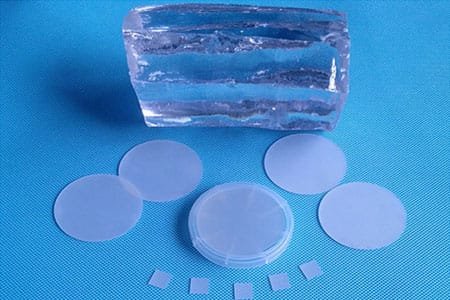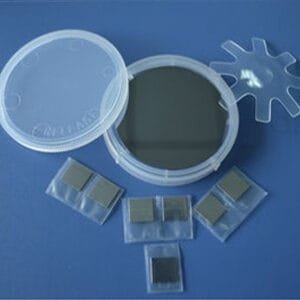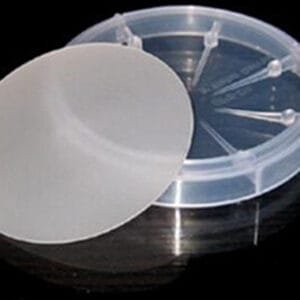YSZ Substrate (Yttria-Stabilized Zirconia)
Yttria-Stabilized Zirconia (YSZ) substrates are widely used in high-temperature superconducting thin films due to their excellent mechanical and chemical stability. With high hardness, strength, toughness, and wear resistance, YSZ is a key material in various industries, including ceramics, refractories, aerospace, electronics, and optics. Its superior physicochemical properties make it ideal for advanced thin film applications, including energy storage and sensor technologies.
Key Physical Properties
| Property | Value |
|---|---|
| Material | YSZ (Yttria-Stabilized Zirconia) |
| Structure | Cubic |
| Lattice Constant (Å) | a = 5.147 |
| Growth Method | Arc melting method |
| Hardness | 8 – 8.5 (Mohs) |
| Melting Point | 2700℃ |
| Purity | 99.99% |
| Density | 6.0 g/cm³ |
| Thermal Expansion | 10.3 x 10⁻⁶/℃ |
| Permittivity | ε = 27 |
Specifications
- Size: 10×3 mm, 10×5 mm, 10×10 mm, 15×15 mm, 20×20 mm, Dia 1”, Dia 2”
- Thickness: 0.5 mm, 1.0 mm
- Polishing: SSP or DSP
- Orientation: <001>
- Redirection Precision: ±0.5°
- Edge Redirection: 2° (special 1° available)
- Angle of Crystalline: Custom sizes and orientations available
- Surface Roughness (Ra): ≤5Å (5µm × 5µm)
Packaging Details
YSZ substrates are packaged securely in class 100 clean bags or wafer containers within a class 1000 clean room to ensure optimal cleanliness and protection.
Explore superior YSZ Substrates (Yttria-Stabilized Zirconia) from TFM for advanced thin film applications and high-performance electronic device fabrication.





Reviews
There are no reviews yet.